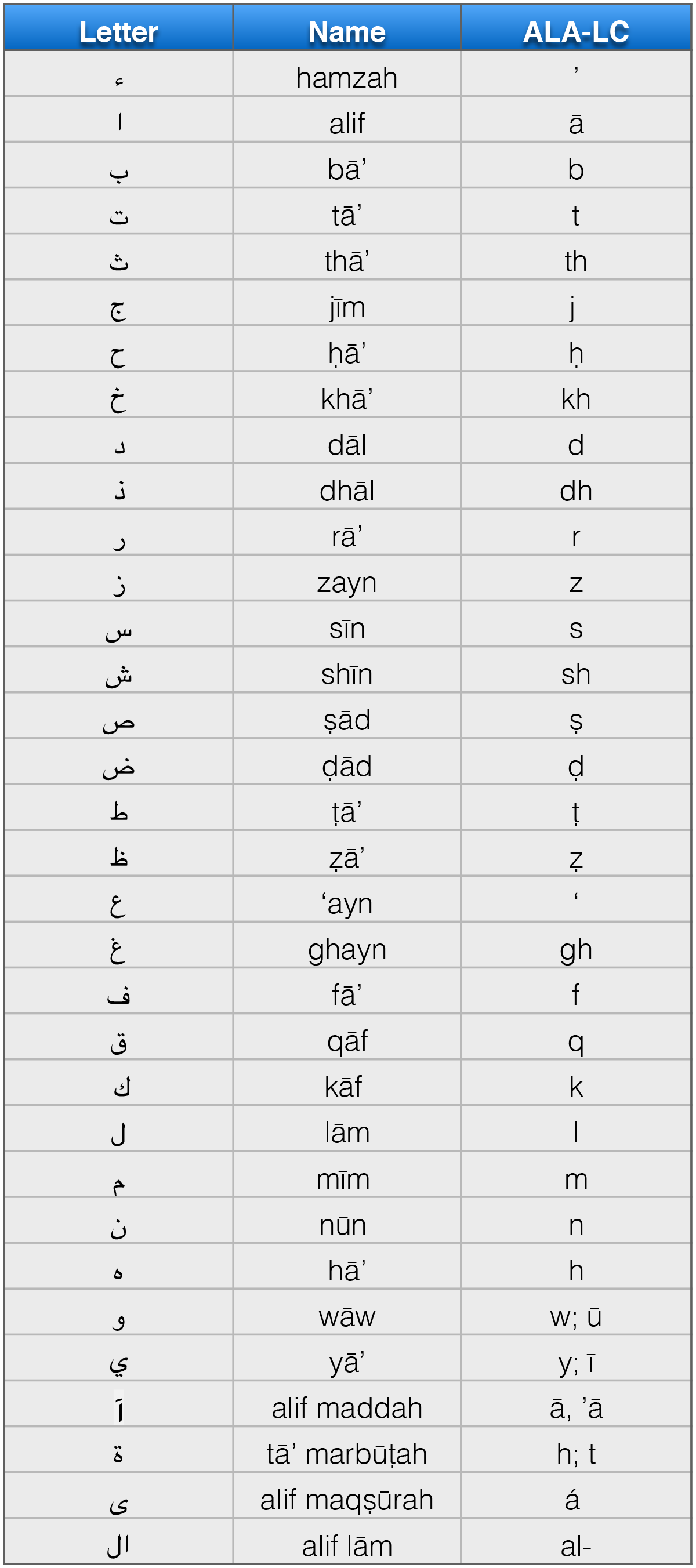A Note on Language
Camron Michael Amin; Alam Payind; and Melissa McClimans
Because of our decision to use Arabic vocabulary for identifying culturally important terms that relate to Islam and pre-Islamic concepts, we need to address the issue of Arabic being written with the Arabic alphabet. Transliteration is the system for rendering Arabic sounds, which are normally written in the Arabic alphabet, into the Latin alphabet which is used by most European languages (and modern Turkish). There is a lot of local variation in how these are actually pronounced. However, as mentioned above, we have chosen to present Arabic words according to their pronunciation in Classical Arabic for the sake of clarity and consistency.

For the system we use to represent Arabic sounds in the Latin alphabet, please see the Romanization chart above, based on the American Library Association’s system. This chart is based on pronunciation of classical Arabic. Despite our choice of classical Arabic pronunciations, there are many classical pronunciations, that in reality are quite rare in the Middle East, even in Arab countries. The letter ḍad, for example: in some Arabic-speaking countries the ḍ pronunciation remains similar to classical, but it is usually pronounced z. Thus, Ramaḍān becomes Ramazān in many local contexts. In Persia and Turkish, the sound becomes a “z” also (formally and colloquially).
